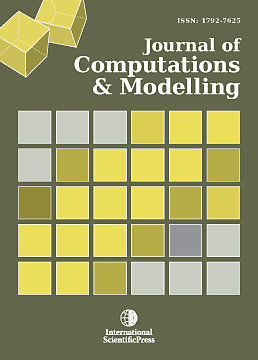Journal of Computations & Modelling
The Use of Body Motion Analysis as an Artificial Neural Network Method for Personal Identification
-
 [ Download ]
[ Download ]
- Times downloaded: 10898
-
Abstract
There is limited evidence to suggest an optimal biometric method in order to achieve an enhanced level of information security as well as recognition accuracy. Recently, novel approaches for the development of practical biometric identification systems have shown that body motion analysis seems to overcome most of the risks and vulnerabilities related to security and privacy and also characterized by simplicity and precision. This study examined the ability of a body motion analysis system to accurately identify individuals throughout specific periods of time. Specifically, thirteen males have performed three trials throughout a single day as well as pre and post an eight-week period. A high speed video camera was used to collect recordings of a full stride (two consecutive steps). Analysis of the video data was performed using a digitizing hardware system. After video analysis, various kinematic variables related to foot motion (total time, stride rate, stride length, flying time, contact time, velocity) were compared in order to measure body motion analysisí recognition efficiency. These kinematic variables are the inputs for a classical artificial neural network (ANN), which is used for the personís recognition. The output is the identity of the person. The ANNís is optimized regarding the values of crucial parameters such as the number of neurons, the time parameter and the initial value of the learning rate, etc. using the evaluation set. The evaluation criterion is the successful percentage of the personís identification. Statistics showed that trialsí variations throughout day and the eight-week period for most kinematic variables were small, indicating high data reproducibility. The respective initial ANN results are encouraging and indicate an increased efficiency of body motion analysis on personal identification. In future, more measurement-trials per person during the reference period time and a larger participant sample may allow the resultsí generalization. It is also suggested that in order to obtain fast and accurate biometric identification even after a relatively long period of time, one may prefer body motion analysis over other biometric methods.
